Mon, 27 Apr 2015 . Last updated Thu, 25 Jun 2015 09:05


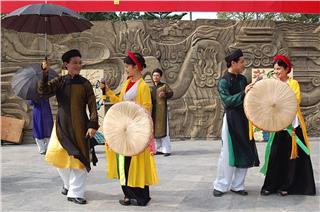
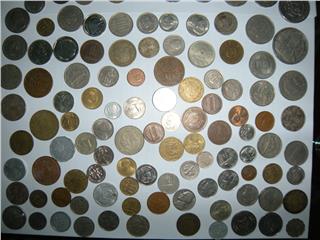

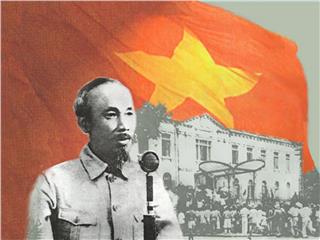
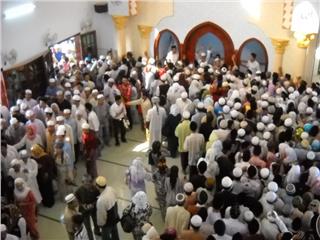

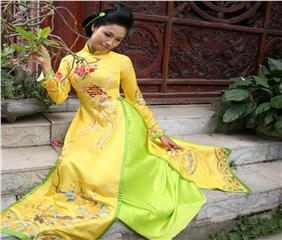
Legend has it that Muong people could make ear-catching sound by knocking at natural stones and stalactites around in caverns around their living places. Then they found copper and knew how to make bronze. Based on the sound from natural stones, they invented gongs and drums which can produce more complicated sound. These musical instruments have been played at cultural and spiritual events of Muong people for ages.
Guys carrying drums take the lead. Girls holding gongs follow. To the Muong land, they begin playing the bass drum. Playing gongs of different sizes which make sonorous sound, so gongs were mentioned in “The Birth of the Earth and Water”, the legendary epic of Muong people.
Gong and bronze drum…(The Muong call bronze drum “khau dong” or “trong chang”)… are the two most ancient bronze musical instruments that were made first in the Hung Kings era, when the Viet-Muong community had not yet separated. The two musical instruments had close association with the cultural and spiritual life of Vietnamese people in the past. Gong and drum were less and less used by Kinh people, while they were in use by the Muong during their funerals, religious activities and the “lang dao” system until the beginning of the 20th century. Noticeably, the gong has been widely used up to now.
Folk saying has it that the Muong call the musical instrument that is made of bronze in the circle shape, looks like “lap la”, has shallow circular edges and a knob in the middle, and can make sound “chieng”. Muong people seldom call it “cong”. “Cong” is the way they call “chieng” when communicating with Kinh people or combining this word with other Viet-Muong words. The Muong consider “chieng” as sacred objects or offerings. As a metal object which is hard and sonorous, “chieng” has spirit which drives evil things away and brings peace to the host family. Materially, “chieng” is the symbol and measurement of wealth and power.
The gong is more than the symbol of wealth and power. It is widely used in daily life to announce a death, call hunting dogs, gather villagers and so on. In addition, the Muong use gongs to play “sac bua” (congratulation songs played with gongs) in their traditional folk festivals. After their New Year festival on the 2nd day and “Khai Ha” ceremony on the 7th day, gong troupes, called “Phuong bua”, start their spring performances from home to home. A gong troupe is led by a “trum phuong”. Everyone can become member of gong troupes regardless of age and sex. However, there are gong troupes whose members are men. “Trum Phuong” must be good at singing, communicating and improvising. Especially, he must know as many “sac bua” songs as possible.
Most of the members of gong troupes are young. There are 1-2 seniors who play the role of “trum phuong”. A gong troupe has at least 8-12 gong players, two others carry baskets containing rice and gifts. The unique folk art form is performed on the first days of the New Year where the gong is the main musical instrument. The Muong have long practiced wet rice farming. Thus, the water is of great significance to them. Apart from celebrating the New Year, “xec bua” songs are performed to pray for rain for the coming crop. To this end, the gong sound, especially the “kham” sound, works like the thunder calling the rain. Obliviously, Muong people in the past played the gong in rituals to pray for the rain and bumper crops.
The gong music is found abundantly in folk festivals where Muong villages play many different songs. Noticeably, the “kham” sound is played in the same way. It’s the nice blend of gong pieces with medium and low pitch. The “kham” marks the end of a piece of music, at the same time fills the valleys and rocky mountains with resonant melodies.
Obliviously, the gong is the most simple and original form of art and culture of Muong people. It experienced very few changes. That’s why it remains what it used to be. When it comes to Ba Vi, we cannot but mention cultural relic sites like communal houses, temples, pagodas and other religious buildings, noticeably the relic complex of Ha, Trung and Thuong temples which is dedicated to Son Tinh, the god of Tan Vien mountain. The god has been the symbol of the unyielding spirit in the fight against natural disasters for ages. Legend has it that the god was considered as the founder and the protector of the nation. With such great deeds, the god was bestowed with the title “Supreme God”.
The gong is mentioned as a musical instrument that has taken root deeply in the cultural treasure of the Muong community in Ba Vi. Muong people live in the communes of Khanh Thuong, Minh Quang, Ba Vi, Ba Trai, Tan Linh, Van Hoa and Yen Bai. When the gong sound echoes, Muong people living on Ba Vi mountain slopes, from old women to small children, wear “pan” shirts, long black skirts and turbans to the spring festival. The mountains and forests echo with the gong sound which cheers people up. No one knows when the gong has become the pinnacle of folk art and the unique musical instrument of Muong people in Ba Vi, Hanoi.
None of Muong people in Ba Trai today know when and how the first gong was made. However, the first Muong people moving from Hoa Binh to Ba Vi mountain brought the gong pieces along with them to play in festivals, weddings and funerals. In the past, households in a Muong village lived away from each other. Travel conditions were difficult, too. Therefore, the gong sound was made to gather Muong people to deal with village affairs. Since then, the gong has been part of Muong ethnic culture with many distinctive features.
Gong performances of Muong people in Ba Vi reveal different shades of feelings. In playing the gong, the performer attached great significance to rhythm, which helps the audience better understand the content. According to cultural experts in Hanoi, the gong of Muong people in Hanoi stands out thanks to the perfect combination between each member and the whole troupe. Unlike the gong of Ede ethnic people in the Central Highlands which is played in their long house only because it serves as the mediator between man and god, the gong of Muong people here is played from home to home during their main festivals. This makes the gong of Muong people in Hanoi distinctive.
In terms of gong culture, Ba Trai commune is taking the lead among the 7 mountainous communes of Ba Vi district. The only gong set of the Muong is still kept here. It was brought here from Hoa Binh by those who love the gong culture. With the aim of preserving and promoting this unique musical instrument, Ba Trai gong troupe was founded in 1986. The community plays an important role in preserving and promoting the gong culture.
The next generations need to how to play the gong and get deeper insights into the true meaning of pieces of music and dances. To this end, the youth can be proud and highly aware of the importance of the preservation of the traditional culture. It is hoped that the gong culture will find its golden age soon and the Muong Ba Trai village will resound with the verse: “The gong’s like the brilliant sun. The gong’s like the scared moon. The gong rises from the mountain slope. Wake up, the gong!”
Source: VTC10 - NETVIET

 Đặt vé máy bay cho người Việt?
Bấm vào đây
Đặt vé máy bay cho người Việt?
Bấm vào đây
Our service uses cookies for technical, analytical and marketing purposes. See our Cookie và Privacy policies for more information. If you agree to this, just keep browsing.


